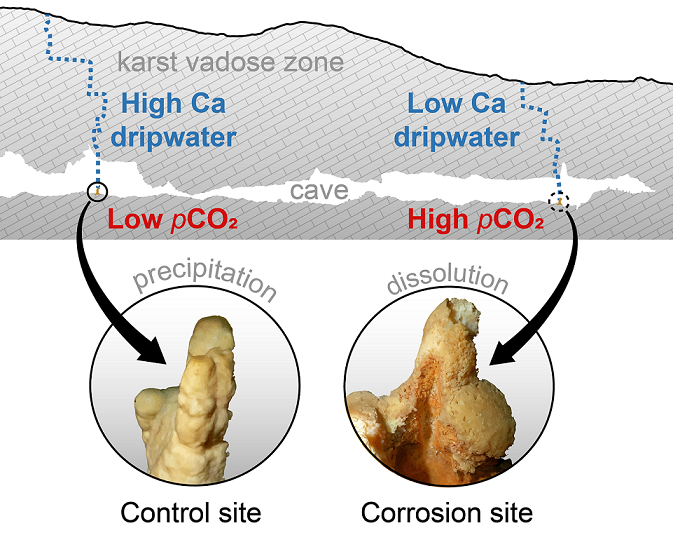Speleothems have proven to be one of the most reliable terrestrial archives for palaeoclimate research. However, due to the complexity of karst systems, long-term monitoring and high-resolution analyses of the cave atmosphere and water geochemistry have become essential to better constrain the factors that control calcite growth and how geochemical palaeoclimate proxies are encoded into speleothems. While calcite precipitation incorporates the palaeoclimate signals into the speleothem fabric, certain conditions in caves can favour dissolution, which may form hiatuses or even destroy these signals. In extreme cases, in-cave dissolution by dripwater can form cup-shaped features (i.e., corrosion cups), which were the main focus of this study. The study site in Postojna Cave, Slovenia, was investigated through cave climate monitoring and drip and cup water sampling, which took place during 2017–2021. We found that the cups are fed by low calcium drips as the consequence of the thin vadose zone above the cave. Due to the specific configuration of airflow pathways, the study site accumulates high levels of CO2 (>10,000 ppm), which shifts low calcium dripwater into undersaturation. This causes dissolution on rock surfaces and speleothems on the cave floor. The results of this study have broader significance in addressing the suitability of cave environments and speleothems used in paleoclimate research.

